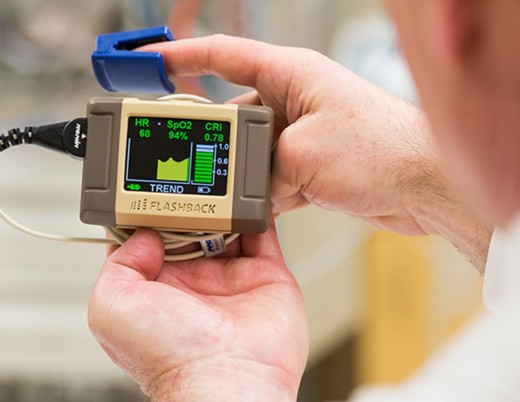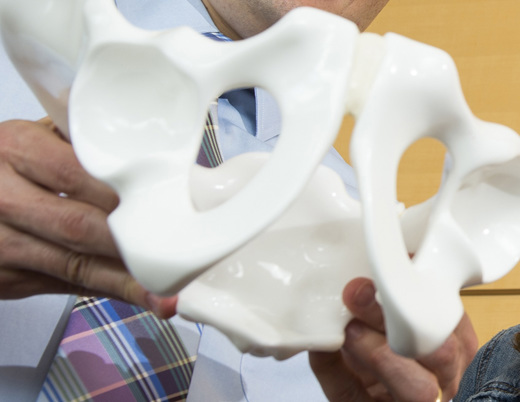How can pediatric readiness education improve emergency care outcomes for children across Colorado?
When a child living in a rural community needs immediate critical care, they’re often hundreds of miles from a hospital that can help them — a distance that can determine their fate. Faced with the decision to either visit a critical access provider or travel for hours to a large hospital with critical care capabilities, rural children face double the mortality rate of kids in urban areas, according to the Centers for Disease Control and Prevention. Now, a program within the University of Colorado School of Medicine, EMS for Children Colorado, is helping turn these statistics around. With one rural hospital as their model, they’re proving that pediatric readiness efforts can transform an unprepared emergency room into an institution prepared to save lives.
The decline of rural hospitals
Emergency Medical Services (EMS) for Children is a federally funded program that aims to improve emergency care for children by giving hospitals access to medical education and resources so they can implement pediatric best practices in their institution. Kathleen Adelgais, MD, MPH, has seen the challenges facing rural communities over the past decade directly impact pediatric healthcare.
“There's been a national closure of hospitals in rural communities, partly because they don't have enough annual visits to sustain them,” says Dr. Adelgais, who serves as Project Director for the EMS for Children Colorado state partnership program. “Then hospitals must make decisions about what service lines they're going to keep open.”
Fewer hospital visits are closely tied to population decline in small town America — a rising trend with a range of causes. For instance, a major employer might close, forcing people to move elsewhere. Those who stay often lack health insurance or the extra funds needed to visit a hospital, which means they likely won’t unless it’s necessary (1). Rural hospitals are considered critical access, meaning they’re eligible for federal funding if they don't belong to a major healthcare system. However, it can be difficult to secure these funds and know how to allocate them appropriately toward improving pediatric readiness.
No matter what causes towns to decline, healthcare workers feel the strain. They often have to drive farther to reach clinics with patients while serving multiple roles, putting in more hours across specialties, primary care and the emergency department. “Healthcare providers have to maintain a higher level of scope and do a lot more to maximize their role with limited clinical exposure, because there's lower volumes of patients overall,” Dr. Adelgais says.
Although 93.7% of children in the United States can travel to an emergency department within 30 minutes, only 33% of children live within 30 minutes of an emergency department that’s pediatric ready (2)."If a child goes to an emergency department and they're very, very ill, and that hospital is not ready to care for them, it will be difficult to provide the stabilizing care they need before transfer to another hospital.”
Raising the bar in Rifle
As part of its work in supporting hospitals, EMS for Children Colorado oversees Colorado Pediatric Preparedness for the Emergency Room, or COPPER — a program that partners with healthcare organizations across the state. Representatives from nursing, respiratory therapy, pharmacy and medical education from Children’s Hospital Colorado, The University of Colorado School of Medicine, Denver Health, HealthOne, UCHealth and other healthcare networks formed COPPER’s steering committee in 2018.
After creating a webpage with pediatric readiness resources, including a Colorado-specific version of the National Pediatric Readiness in the Emergency Department Checklist, the multi-institutional, multidisciplinary steering committee invited hospitals across Colorado to participate in a pilot of the program, in which they would complete the checklist and application, plus a letter of commitment signed by their leadership team.
Grand River Health was one independent hospital that became an early adopter of pediatric readiness through COPPER. After signing up for the pilot program, this independent rural hospital in Rifle, Colorado, scored 51 on the 100-point national Pediatric Readiness Project Assessment — an evaluation that asks questions regarding staff credentials, emergency department triage policies, equipment resources and other hospital policies specifically related to the care of children.
This low score prompted Grand River Health to take action. Its leaders asked for support from the COPPER steering committee, which offered its pediatric readiness resources. Using these guidelines, Grand River Health embarked on a hospital improvement plan that touched every area of their care plan for kids.
For example, Grand River Health’s care teams developed a system using color-coded sticky dots to manage medications and kid-sized equipment. These dots are matched to the child’s height and weight and stick onto their arm band to ensure proper dosing. "As care gets transferred out of the ER to an inpatient team, that information is just a basic part of describing the child in addition to what their diagnosis is, what their age is and what their length-based tape color is,” Dr. Adelgais says.
Grand River Health’s care team also used COPPER resources to better understand when CT scans aren’t needed and how to insert child-sized emergency airway devices.
After the improvement plan, Grand River Health scored a 97.5 on its pediatric readiness score, placing them in the top 10% of facilities nationwide. Members of the COPPER steering committee conducted a site visit in May of 2023 to evaluate Grand River Health’s improvements, ensure pediatric readiness in their emergency department and award them with COPPER recognition.
Grand River Health now serves as a case study that informs how the EMS for Children Colorado program can help other hospitals on the Western Slope better prepare to help children who come to them in critical situations.
Partnering in preparation
Such preparedness doesn't just improve care for children — it levels the playing field for every hospital and patient.
"Pediatric readiness is a rising tide lifting all boats,” Dr. Adelgais says. “Once you start to really pay attention to your policies and procedures, medication safety and patient safety — all the key components of general healthcare for a group of vulnerable patients — it highlights where there are other safety issues at the hospital level.”
For instance, recent research shows that a higher level of pediatric readiness is directly correlated with a reduction in mortality based on race and ethnicity (3).
Additionally, pediatric readiness reduces the health disparities that occur between rural and urban children.
“The data shows that if hospitals are pediatric ready, they are better able to stabilize children until they can get to definitive care. There's a decrease not just in long-term mortality, but also in short-term mortality,” Dr. Adelgais says.
Findings from 2023 show that injured children who sought care at hospitals with a pediatric readiness score of 88-100 saw a 60% lower in-hospital mortality rate, while the mortality rate among children seeking care for medical conditions was reduced by 76% (4).
“Once you start to really pay attention to your policies and procedures, medication safety and patient safety — all the key components of general healthcare for a group of vulnerable patients — it highlights where there are other safety issues at the hospital level.”
Kathleen Adelgais, MD
Despite these benefits, one of the greatest obstacles preventing a nationwide improvement in pediatric readiness is the siloing of healthcare organizations and the protection of information. Historically, hospitals in the same region have regarded one another as competitors, and therefore haven't been likely to share their best practices.
Today, however, Dr. Adelgais and her team encourage all hospitals to think of one another as resources who can share crucial information and teach critical skills. Once rural hospitals become pediatric ready, larger children’s hospitals can feel confident referring their patients there when their volumes exceed capacity. This work also allows rural kids to receive care close to home, which in turn keeps their local hospitals open.
According to Dr. Adelgais, this fosters a win-win situation that gives kids the care they need more quickly. "If we can align on pediatric readiness, we can create a system that's ready to take care of children anywhere, at any time, with any condition.”
Citations
- Munira Z. Gunja, “Rural Americans Struggle with Medical Bills and Health Care Affordability,” To the Point (blog), Commonwealth Fund, July 24, 2023. https://doi.org/10.26099/pq3a-k123.
- Ray, Kristin N et al. “Access to High Pediatric-Readiness Emergency Care in the United States.” The Journal of pediatrics vol. 194 (2018): 225-232.e1. doi:10.1016/j.jpeds.2017.10.074
- Jenkins, Peter C et al. “Emergency Department Pediatric Readiness and Disparities in Mortality Based on Race and Ethnicity.” JAMA network open vol. 6,9 e2332160. 5 Sep. 2023, doi:10.1001/jamanetworkopen.2023.32160
- Newgard CD, Lin A, Malveau S, et al. Emergency Department Pediatric Readiness and Short-term and Long-term Mortality Among Children Receiving Emergency Care. JAMA Netw Open. 2023;6(1):e2250941. doi:10.1001/jamanetworkopen.2022.50941
Featured researcher

Kathleen Adelgais, MD, MPH
Project Director, Colorado EMS for Children
Emergency Medicine
Children's Hospital Colorado
Professor
Emergency Medicine
University of Colorado School of Medicine





 720-777-0123
720-777-0123










